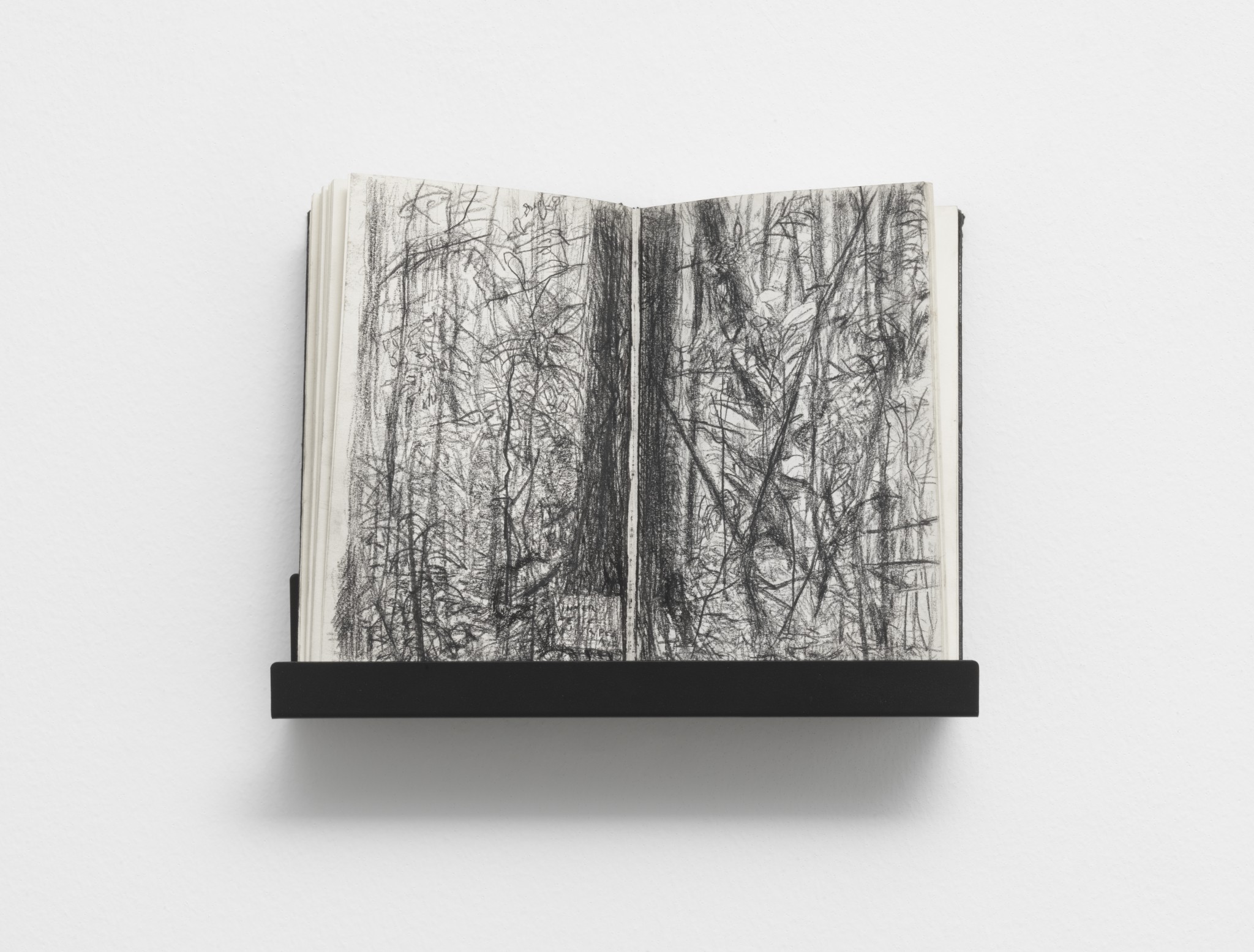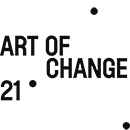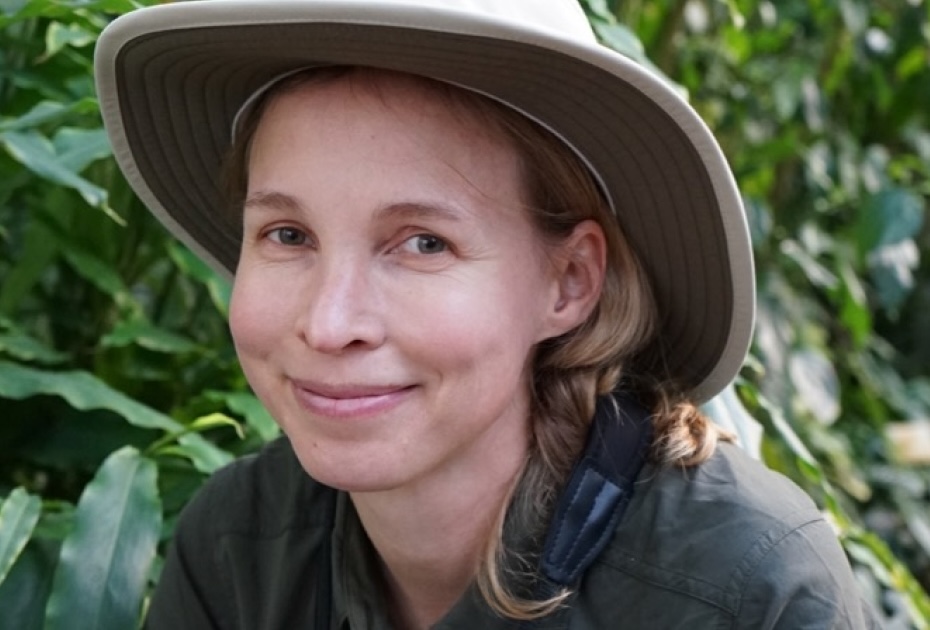Artist Haley Mellin currently lives in Union City, New Jersey. Her predominant mediums are drawing and painting. She is the founder of the land conservation initiative Art into Acres.
Tell us about your new exhibition Biodiversity and Betadiversity at Dittrich & Schlechtriem Gallery in Berlin.
The exhibition presents my new paintings and drawings, a result of my observations while working on locally-led, community-based, land conservation programs I organise around the world. They depict an old-growth wilderness that will remain wild, and is rich with diverse flora species, many that are new to science. The locations seen in the paintings are biodiverse (high in species diversity) or betadiverse (biodiversity in redundancy, meaning if one species is lost or declines, others can compensate, maintaining the ecosystem’s functionality and stability). These works are intended to reflect a wide range of species, as well as to speak to their rights to have a habitat and to naturally evolve within it. With no horizon lines, the plants appear all around – we are immersed in them. In my mind, the chromatic and biological diversity of this growth reflects optimism and resilience.
You have a strong personal environmental commitment. How did you incorporate sustainability into the making of the exhibition?
A carbon emissions budget was planned to prepare for this exhibition. To reduce shipping, the large charcoal drawings were drawn on-site in the gallery, and the linen canvas sourced from a local shop in Berlin. The drawings are three meters in height, and yet, rolled in a tube, their shipping was minimal. For the small paintings, instead of transporting them in crates, they were carried with me to the gallery in a double-walled cardboard box. For ecological reasons, I abandoned oil painting. The paintings and drawings in the show are made of gouache, watercolor, graphite, canvas, charcoal and were created outside using non-toxic materials. The materials allowed for a safe clean-up and for the paintings to dry in a short amount of time, to be mobile and put in a napsack (an all-in-one jacket and sleeping bag).
Sustainability also inspired the exhibition’s display. Composed like a book, the paintings are hung in pairs, recalling notebook pages. Next to them is also a reading library with publications borrowed from local artists’ studios about ecology and environmental justice, climate change refugia, the Global South, biodiversity, and biomes. Environmentally-positive actions are something that we’re all learning together. For sustainability to be an effective global action, it will be inclusive, and involve everyone. The gallery also played its part. Dittrich & Schlechtriem is housed in an energy-efficient, solar-powered building and collects rainwater for internal use. On the opening day, a plant-based lunch based on local produce was served.
 Haley Mellin, Biodiversity and Betadiversity, Exhibition view, DITTRICH & SCHLECHTRIEM, Berlin, 2024. © Haley Mellin / DITTRICH & SCHLECHTRIEM
Haley Mellin, Biodiversity and Betadiversity, Exhibition view, DITTRICH & SCHLECHTRIEM, Berlin, 2024. © Haley Mellin / DITTRICH & SCHLECHTRIEM
You founded the land conservation initiative Art into Acres. What are its principles and how do you see it as part of your artistic work?
Art into Acres began in 2017 after fifteen years of research and education. The focus is biodiverse habitats – old-growth ecosystems that are millions of years in development. The initiative focuses on supporting local communities and Indigenous peoples in self-implementing the protection of their historic lands. Many of the locations are remote and uninhabited. The initiative raises funds through donations and the sales of gifted artworks to support the new designation of permanent protected areas.
The habitat conservation is collaborative, locally-led and often uses legal means. As such, the conservation process is community-stewarded, internationally-recognised and financially affordable. For example, an artist recently co-supported the local preservation of 250,000 acres of mountain-top watershed in Ecuador. This project engaged a local water protection law that had been ratified, but not yet used in the region. Legal and local partners on the project included the Andes Amazon Fund, Art into Acres, Re:wild, and the Nature Conservancy Ecuador.
An artwork is a visual representation of a moment in time, and a landscape is a visual representation of all time compounded. Next month, in June 2024, a new art project supporting ecological connectivity will be unveiled with the artist Julian Charrière, the Beyeler Foundation and Globus.

Haley Mellin, Cloud Forest, 2024, Gouache, acrylic and ink on canvas 40.64 x 50.8 x 3.17 cm (left, detail; right, full image) © Haley Mellin / DITTRICH & SCHLECHTRIEM
In addition to co-founding Gallery Climate Coalition (GCC) and Artists Commit (AC) in New York, you train people about carbon in the art sector itself. How important is this to your daily life as an artist?
Teaching and artmaking are similar in intent. I began teaching in bilingual schools for migrant working families in Oakland, California, when I was twenty, and I have always taught in some form since then. This year, I will teach a series of staff seminars called What is Carbon? Climate, Art History, and Contemporary Practice at the Metropolitan Museum of Art in New York for their administration, registration, conservation and curatorial teams. This is the museum’s first sustainability and climate education. The talk series begins with chemistry and molecular science, shifts to historic paintings of the atmosphere in the 1400s and 1500s, and ends with practical actions the museum teams can take to reduce emissions and waste. The aim is to support education around sustainability practices in everyday museum work: how we conserve, how we eat, how we ship artworks, communicate, store data, etc. Our relationship to the natural world is about awareness. If we shift our awareness, we shift our actions.
For two years, I volunteered support to museums, studios and non-profits to do their first carbon emissions calculations. Volunteering was something integrated into my life since my father had us volunteer on weekends as kids. Two grants from the Teiger Foundation have contributed to my continued support of first carbon calculations and carbon emissions reduction education. This inaugural support has now funded the completion of calculations for sixty U.S. and European institutions. In Germany, for example, I’ve worked with Documenta 2027, Hamburger Kunsthalle, Kunstmuseum Bonn and the Neue Nationalgalerie.
Who inspires and what drives you?
I have learned from many minds and hearts. I am thankful to mentors such as biologist Thomas Lovejoy, cartologist Karl Burkart and ecologist Enrique Ortiz, who teach about biodiversity and biome science, and to curator Enuma Okoro, who wrote an exceptional piece recently on seeing our bodies as bodies of water.
As a child reading the stories of different species and cultures, I was inspired by history and how we can learn from the past. I grew up near Point Reyes, California, the current land of the red-tailed hawks and the native Tule Elk, where the Indigenous Miwok people live. Learning how human communities like these have long lived in concert with nature is my strongest source of inspiration.
‘Haley Mellin: Biodiversity and Betadiversity’ is currently on show at Dittrich & Schlechtriem Gallery, Berlin, until 29th June 2024.
Authors: Alice Audouin and Eliza Morris
May 2024
Learn more about Haley Mellin
Learn more about Art into Acres
Cover: © Haley Mellin
Impact Art News, March-May 2024 #48

